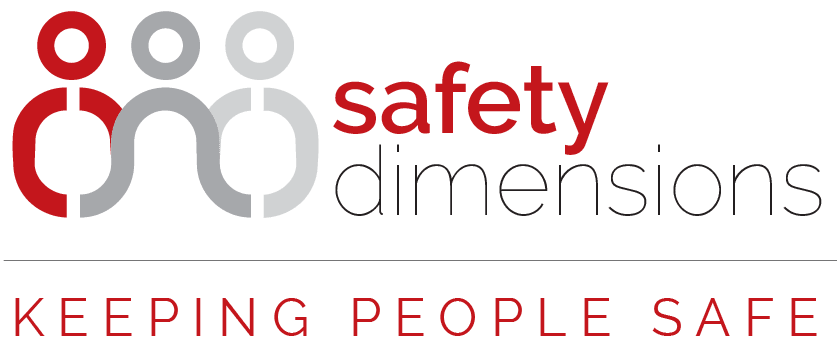How Will You Change This Year?
SCIP© Safety Culture Survey Lights The Way
As we all get back into the new working year, many organisations are planning their WHS goals and training for the year. But how does an organisation know what safety measures are required based on what’s really going on / the true needs and maturity of the organisation and not a guess?
In this article, we look at why Safety Culture matters and how the Safety Culture Improvement Program (SCIP©) diagnostic survey can help organisations take the temperate of their safety culture and target their energy and investment into the areas that will truly make a difference.
Safety Culture – Why It Matters
There is widespread consensus that an organisation’s safety culture’ directly impacts its safety performance. While a strong safety culture can compensate for systemic weaknesses, failures in risk management and poor supervision, a poor safety culture can undermine every component of the WHS system and governance framework.
Major incident investigations almost always include a reference to poor safety culture as a significant contributing factor. Therefore a strong and effective safety culture should be the primary goal of everyone involved in any workplace – workers, managers, boards, unions and regulators; and indeed for society as a whole.
How Do You Assess Safety Culture?
The ability to assess a safety culture – to define areas of weakness and to design and prioritise interventions – is arguably the single most important tool that employers and regulators can have.
The most effective way to assess a safety culture? Ask the workforce to rate it – after all, they are immersed in their organisation’s culture and are best placed to describe its perceived strengths and weaknesses, and they have a very strong personal interest in having that safety culture improved.
The Safety Culture Improvement Program (SCIP©) Diagnostic Survey is a cost effective assessment tool which offers organisations a powerful, predictive and reliable tool for the assessment and improvement of organisational safety culture. Properly deployed, it can become the basis of the overall safety strategy and provide organisations with a strong return on investment.
Most importantly, it provides a robust platform on which to demonstrate the effective discharge of officers’ duties, giving boards and executives the knowledge that their company’s WHS strategy is properly designed, implemented, monitored and assessed.
Features of SCIP© include:
- Focus Groups – Asking The People Who Count
The SCIP© methodology requires a number of focus groups involving the company’s safety experts and a representative sample from the workforce. The expert focus group is used to develop a draft survey that matches the issues and terminologies particular to the company and identifies potentially important demographic factors that need to be taken into account.Focus groups with the workforce enable the survey to capture the respondent’s concept of a perfect’ safety culture, so that the gap between the current and ideal cultures can be measured. A final focus group is conducted to check that the survey statements are unambiguous. Importantly, the workforce focus groups ensure that the requirement to consult with the workforce in relation to WHS interventions is met, this also builds ownership’ of the resulting instrument.
- Ongoing Dialogue With The Workforce About Safety
The process for designing and implementing the SCIP© survey means that an ongoing dialogue is developed between the leadership and workers about safety issues, thereby maintaining an ever-present awareness of the importance of safety in the way things are being done.
- Correlation with other WHS Data and Leading Indicators
The high-level KPIs included in SCIP© reports can be easily cross-correlated with other WHS metrics such as frequency rates and workers’ compensation claims data (another important reason for surveying frequently). High-level SCIP© metrics also provide powerful and predictive lead indicators, highlighting areas of weakness in the WHSMS and in the organisational culture generally. The SCIP© results can also be linked to high level KPIs, such as willingness to recommend as a safe place to work’.
- Actionable Results
SCIP© provides management with the ability to design and implement specific and practical actions in response to the report. Because each issue is ranked in importance, management can prioritise improvements and because of the regular survey process, we are able to confirm the effectiveness of those improvements in subsequent surveys.
- Scalable & Repeatable – Measure Results Over Time
Safety culture is so important it should be measured frequently, ideally 3 to 4 times per year. This allows management to incorporate the results into their WHS reporting metrics, to get effective early warning of latent issues, to prioritise interventions, and to assess the effectiveness of those interventions. It is not necessary to survey an entire workforce. It is only necessary to survey a sufficient number such that management can have confidence in the decisions they make. This helps to minimise survey fatigue’. In practice we find that employees are willing to continue participating in the process once they see management responding to their concerns.
- Statistical Validity
The survey is based on sound statistical design principles and its results are analysed using a statistically sound methodology. Simply assembling and posing a series of questions and collating the answers does not give management any certainty that the survey is covering all the important factors affecting people’s perception of the safety culture.
Want to use the SCIP survey in your organisation? Ready to know where your organisational safety culture stands?
Contact info@ldn.com.au

